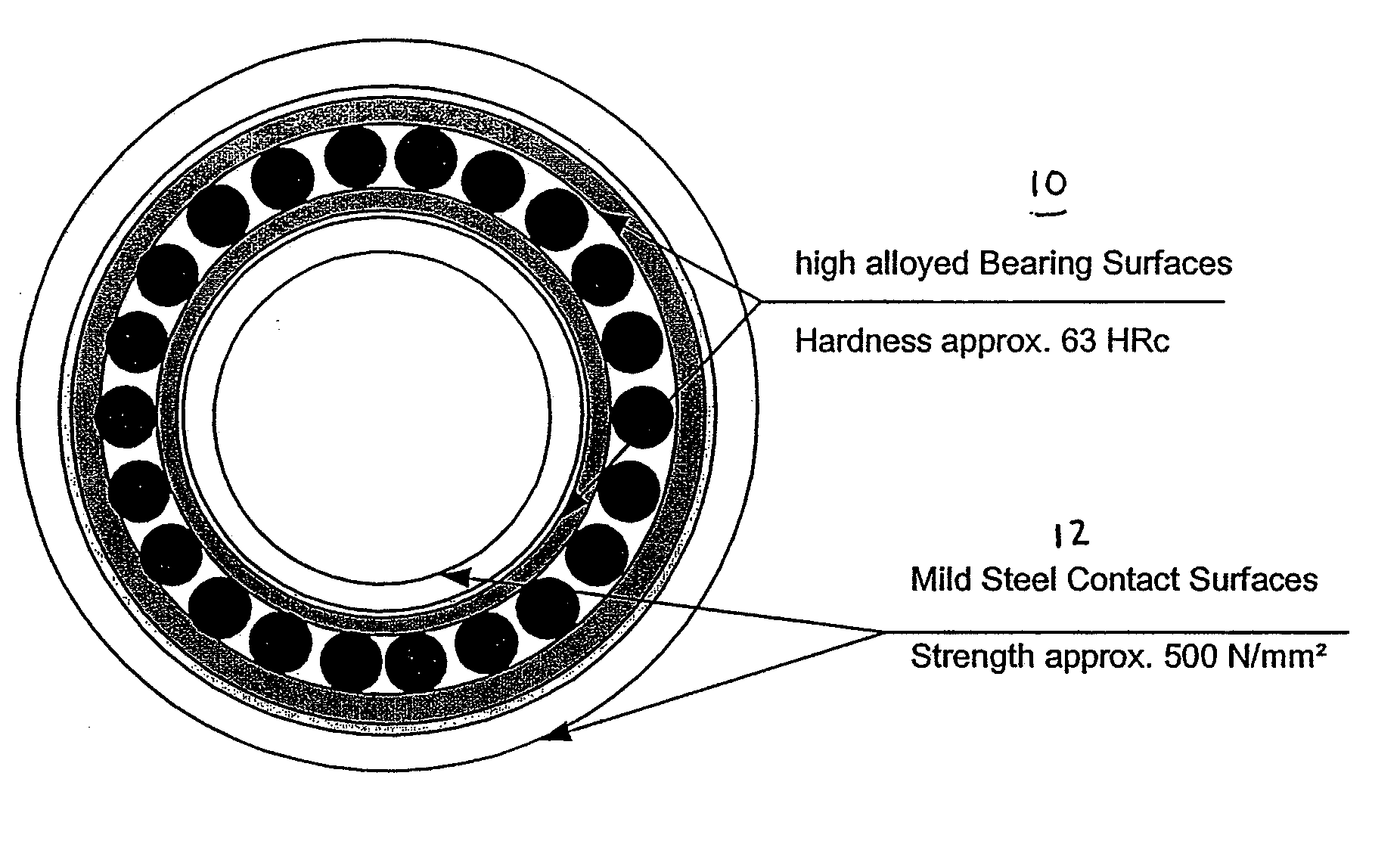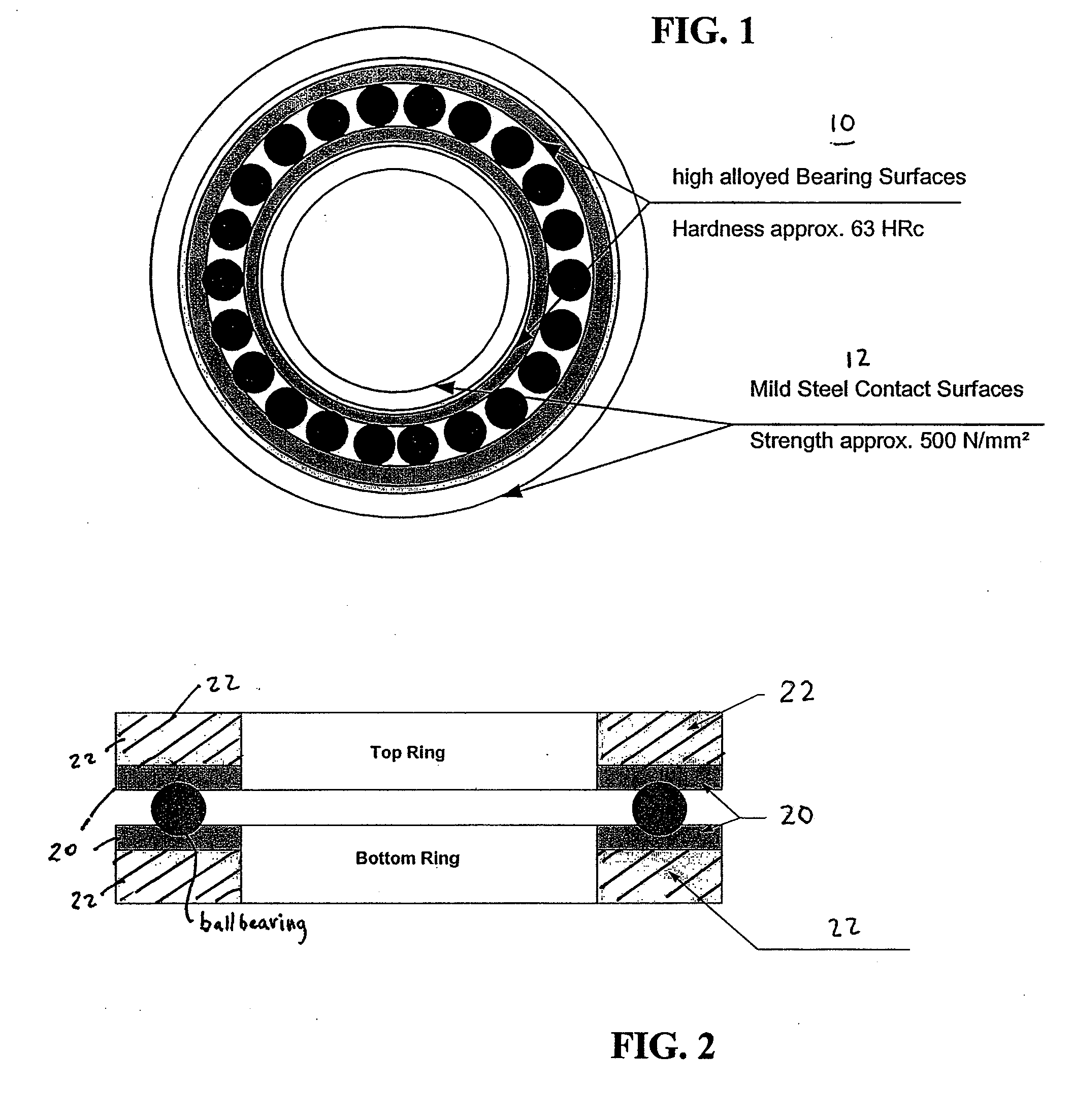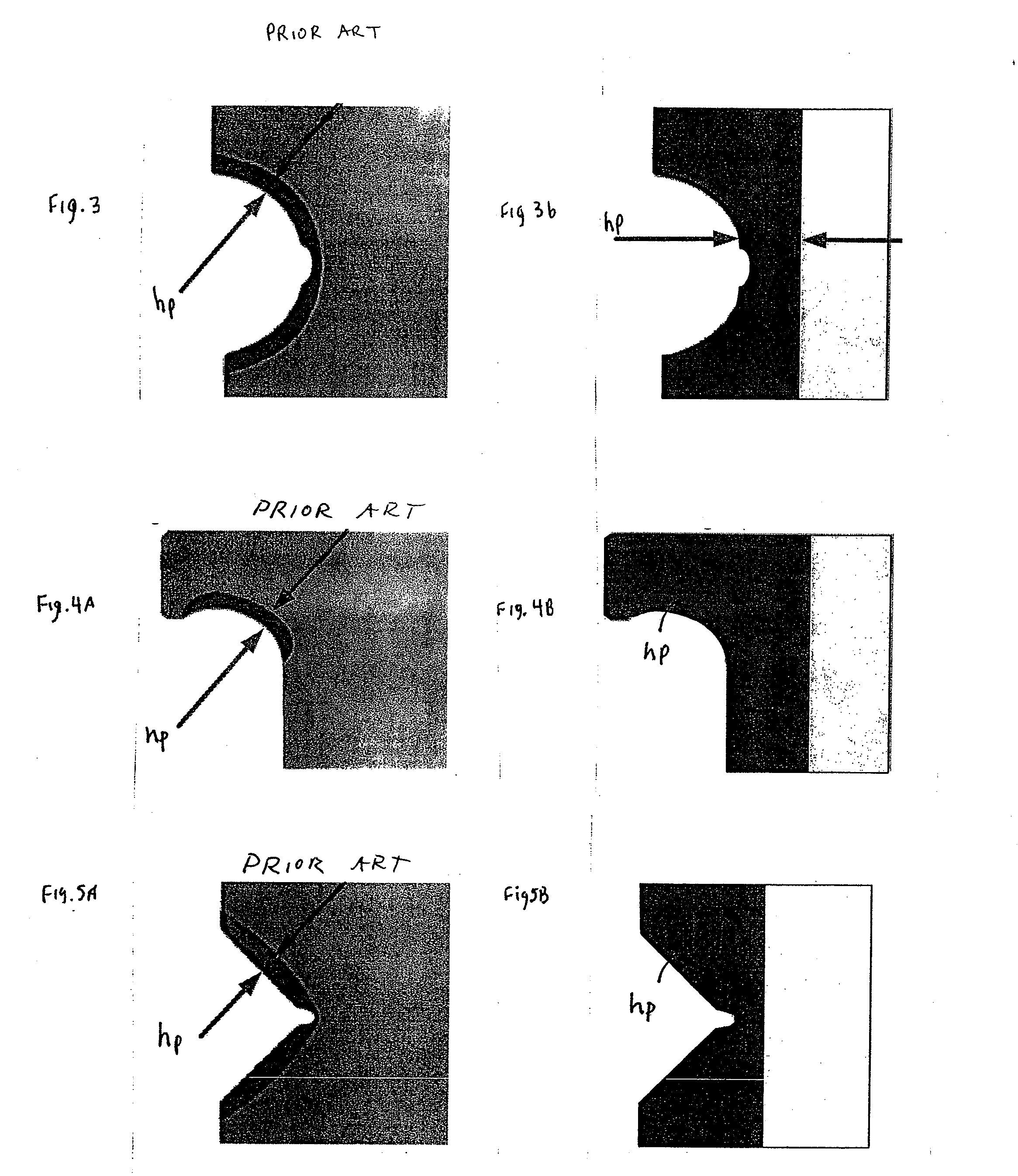Compound Steel Bearings and Methods of Manufacturing
a technology of steel bearings and steel balls, applied in the direction of propellers, propulsive elements, water-acting propulsive elements, etc., can solve the problems of limited hardened steel thickness, limited hardened steel depth, and large bearing requirements that cannot be fully and satisfactorily met in a steel race, so as to achieve less hardness and greater ductility and toughness
- Summary
- Abstract
- Description
- Claims
- Application Information
AI Technical Summary
Benefits of technology
Problems solved by technology
Method used
Image
Examples
Embodiment Construction
[0031]FIG. 1 illustrates a top plan view of a compound steel roller bearing in accordance with the present invention. As described in greater detail herein, the roller bearing includes high alloy bearing portions 10 and mild steel bearing portions 12.
[0032]FIG. 2 depicts a side view of a cross-section taken through an annular bearing in accordance with the present invention. Similar to the embodiment of FIG. 1, the bearing includes high alloyed layers 20 and mild steel layers 22. Such annular bearings may be particularly well suited as azimuth bearings for wind power generators.
[0033]Such annular compound steel bearings are well suited for the transmission of high axial forces and large flexural moments with small relative movements between the co-operating bearing components. A wind power installation may include such a bearing between its pylon-supported machine head and the pylon head, such as disclosed in FIGS. 15-16.
[0034]Bearings of the present invention involving the demand p...
PUM
| Property | Measurement | Unit |
|---|---|---|
| Tensile properties | aaaaa | aaaaa |
Abstract
Description
Claims
Application Information
 Login to View More
Login to View More - R&D
- Intellectual Property
- Life Sciences
- Materials
- Tech Scout
- Unparalleled Data Quality
- Higher Quality Content
- 60% Fewer Hallucinations
Browse by: Latest US Patents, China's latest patents, Technical Efficacy Thesaurus, Application Domain, Technology Topic, Popular Technical Reports.
© 2025 PatSnap. All rights reserved.Legal|Privacy policy|Modern Slavery Act Transparency Statement|Sitemap|About US| Contact US: help@patsnap.com



